It’s kimchi making season in Korea! Here’s a collection of 15 easy kimchi recipes you can make right now and all year round.
In late fall, Korean households make a large batch of traditional napa cabbage kimchi (배추), also called pogi kimchi (포기김치), to last through the winter and early spring. Also, it’s very common to make a few other kimchi varieties during this season. This annual kimchi making event is called gimjang (김장, also spelled kimjang). I grew up watching my mother make kimchi with over 100 cabbages for her gimjang. Her friends in the neighborhood would rotate their gimjang schedule to help each other. Most people don’t make that much kimchi anymore, but the tradition of gimjang continues.
Here, I’ve collected 15 of my easy kimchi recipes! There’s something for everyone and every season! You’ll find kimchi recipes with or without gochugaru (red chili pepper flakes), vegan kimchi, kimchi made with other vegetables such as radishes, scallions, cucumbers, etc. These kimchi recipes feature pretty much all you need to know about how to make the most common kimchi types!
1.Traditional napa cabbage kimchi (or pogi kimchi)
This napa cabbage kimchi is the most common kimchi in Korea. To help you start making kimchi at home, I came up with a recipe using one napa cabbage.
2.Vegan kimchi
Vegan kimchi that’s as good as the traditional version!
3. white kimchi (baek kimchi)
Made without gochugarau, this traditional white kimchi is light and refreshing!
4. Mak kimchi (easy kimchi)
Cut up the cabbage, salt, rinse, and mix with the seasoning! Simple, right? That’s what this easy kimchi recipe is about.
5. Baechu geotjeori (fresh kimchi)
Getjeori is a kimchi that’s made to be eaten fresh without fermentation. It’s a quick, delicious kimchi you can enjoy right after making it!
6. Yangbaechu kimchi (green cabbage kimchi)
Can’t find napa cabbage where you are? Try this kimchi recipe made with a head of your normal green cabbage. It’s light, crunchy, and refreshing!
7. Kkakdugi (cubed radish kimchi)
Kkakdugi is the most common kimchi that’s made with Korean radish. Simply cut the radishes into cubes, salt for a short time, and then mix with the seasonings. Easy!
8. Chonggak kimchi (ponytail radish kimchi)
Chonggak kimchi is made with a small variety of white radish with long leafy stems, which is firmer and crunchier than the large varieties.
9. Quick Dongchimi (radish water kimchi)
Dongchimi (동치미) is a mild water-based kimchi made with a small variety of white radish called dongchimi mu.
10. Nabak kimchi (water kimchi with napa cabbage and radish)
Nabak kimchi is a type of water kimchi that’s made with thinly sliced radish squares and other vegetables. It is easy to make, yet deliciously refreshing!
11. Pa kimchi (green onion kimchi)
This easy kimchi made with tender green onions (also called scallions) is a favorite of mine!
12. Buchu kimchi (garlic chives kimchi)
This kimchi made with tender garlic chives (buchu – 부추) is one of the easiest kimchi variety to make!
13. Oi sobagi (stuffed cucumber kimchi)
Cucumbers are salted and then stuffed with a seasoning mix. Oi sobagi is crisp, crunchy and delicious!
14. Kkaennip kimchi (perilla leaf kimchi)
Kkaennip kimchi is a traditional way to preserve fragrant perilla leaves to be enjoyed during the off season.
15.Bok choy kimchi
Geotjeori (fresh kimchi) is typically made with napa cabbage. This one is made with tender baby bok choy, cheongyeongchae (청경채) in Korean.


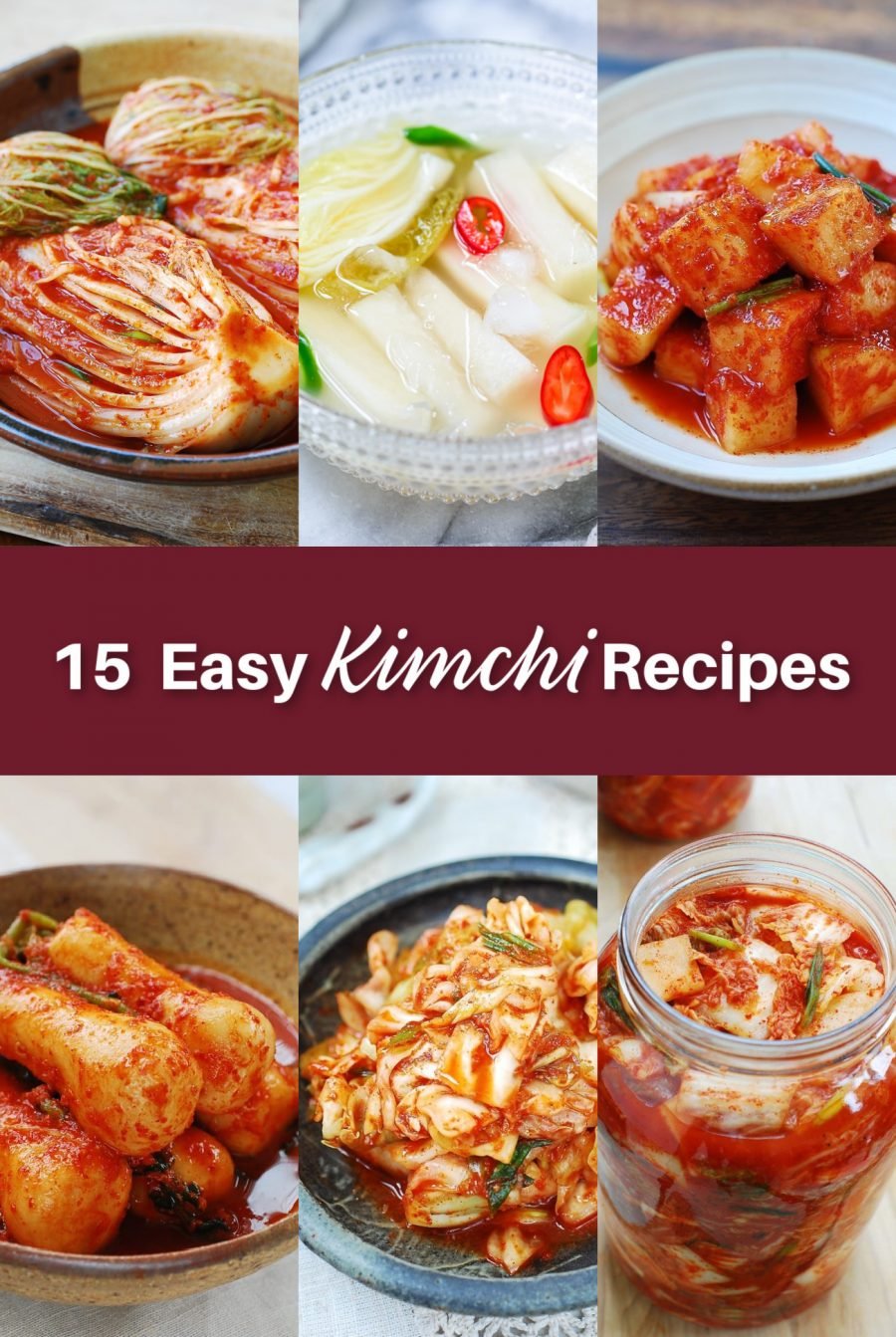
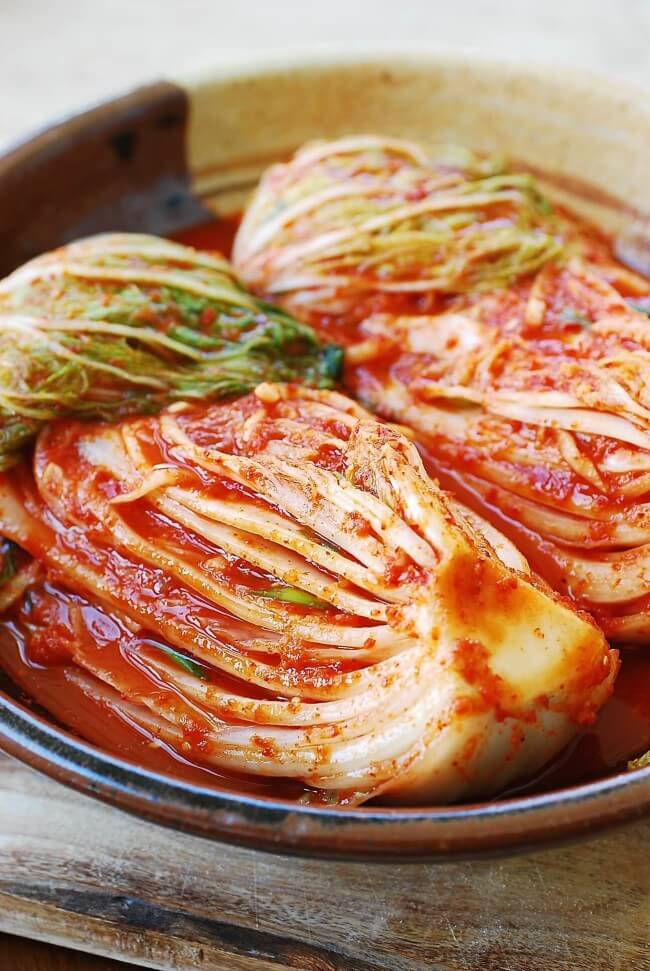


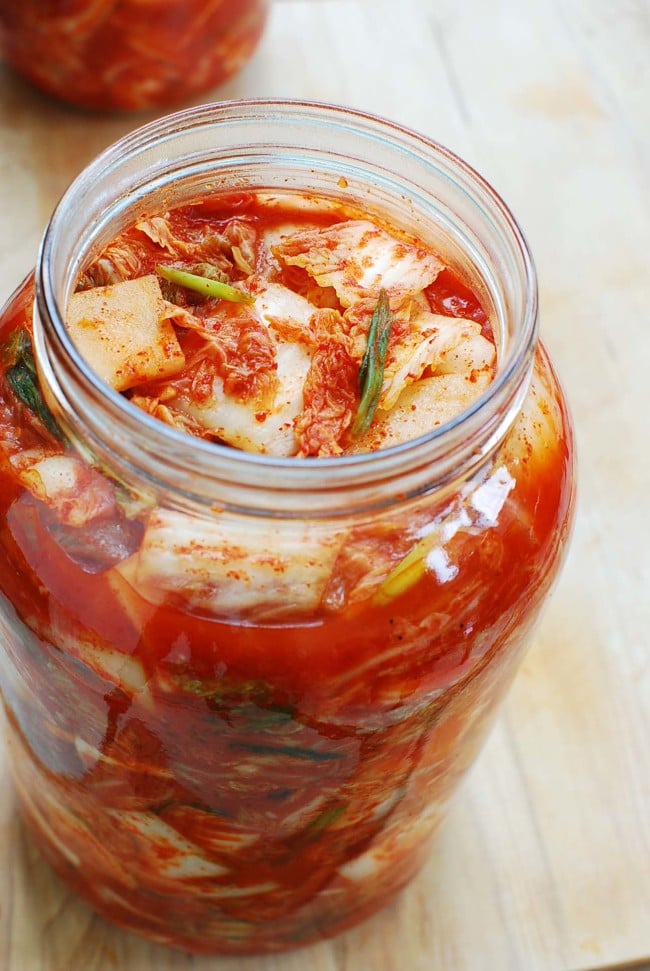

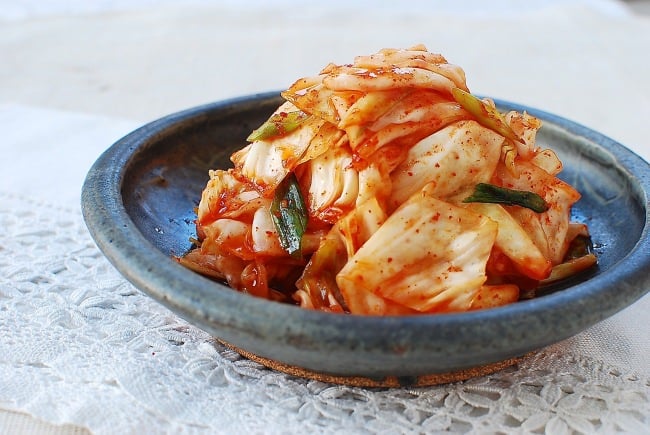



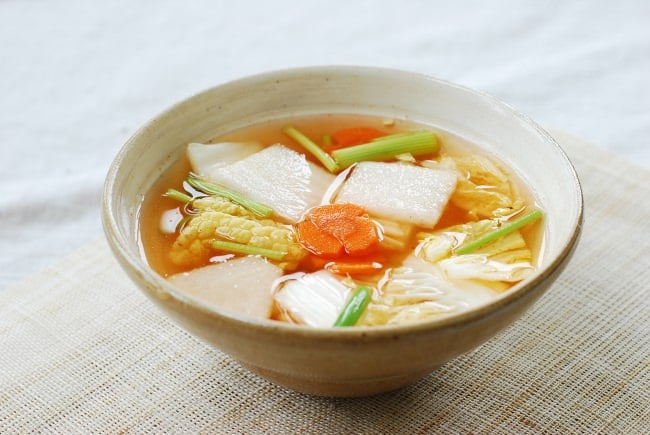

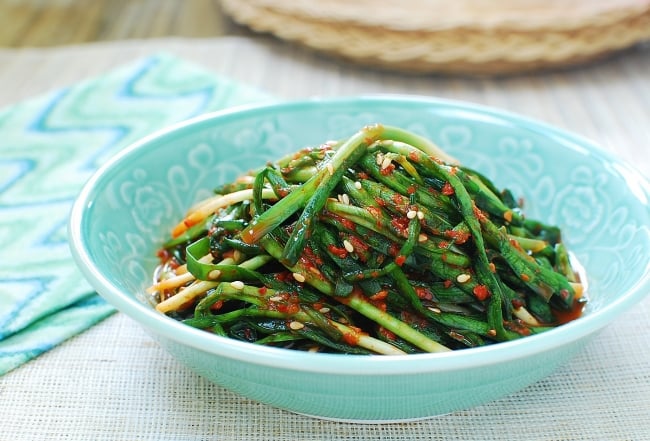




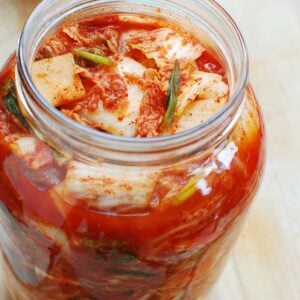
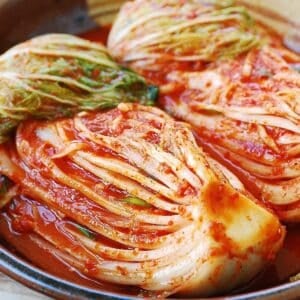


















IT Guy says
one of the varieties of kimchi i used to enjoy in both pyongtaek & uijongbu was a potato kimchi that was prepared very similarly to kkakdugi. my body doesn’t tolerate cabbage very well, so unlike many others who stopped exploring kimchi with cabbage kimchi, i continued exploring & found several to love that i’ve been able to fairly accurately replicate – my favorite part of traveling has always been learning about the locals while enjoying their cuisine, so no arm twisting necessary. i haven’t been able to find a recipe for potato kimchi anywhere, so i can’t get the consistency quite right. ideas?
Mona Likes Cooking says
Yes I have come across potato kimchi as welll. I want to make it but I am not sure how to. Because you cant eat potato raw right so I wanna know how to do it right. So if you have found a recipe, I would also like to have it. If I find it, I will also share it with you.
Hyosun says
I haven’t made it, but yes you have to cook them first. I’d cut them into sticks (like French fry cut) and briefly cook them in the microwave before mixing them with kimchi seasonings.
Myung Armstrong says
Hi Hyoson, thank you so much for these recipes! I can’t wait to try them all. My Mom used to mix in sliced radish with her Mak Kimchi. I can’t remember if she salted it separately or together with the napa. Can you help me? Thank you.
Myung
Rebecca Foster-Faith says
Earlier this week, I violated all the kimchi rules by just rooting thru the refrigerator and throwing everything in and letting it ferment. (kohlrabi, carrots, cucumber, green onions, celery, radish,…) Is it authentic? No, but the spirit of preserving vegetables is strong in my kimchi. I think the ancestors who needed a way to preserve fall harvests for lean winters, they will give me their blessing. We will enjoy it with some rice and grilled proteins.
SUE AKERS says
napa cabbage is 1.78 a pound here in Michigan. I would like to make kimchi that I can afford until I have mastered growing Chinese or Napa cabbage, please help me out with turnip or other veggies that I can use also thanks for the ones here, like the spring onions, and cucumber ones. will they last as long as Napa kimchi? Yoopersue.
Hyosun says
That’s expensive, but may come down a little in the fall during peak season. You can try different vegetables, using the recipe that’s close to the vegetable you pick. Spring opinion kimchi can last for a while but not cucumber kimchi.
Peter REDLICH says
Hello Hyosun! I was looking for Kimchi recipes and found your Website. Great! Think I will spend a lot of time reading your prose!
In fact I was looking for an exhaustive list of différent vegetables one can use to make fermented Kimchi (gochugaru based). A few month ago I discovered a Kimshi recipe by Pailin on youtube and I am totally addicted now…
Thank you for this masterpiece!
Kelly says
These look amazing! I can’t wait to try them! I have a sincere question: eating salty kimchi daily doesn’t cause everyone to have high blood pressure? How?
Rebecca Foster-Faith says
Kimchi is vegetables preserved by fermentation. This means they contain all kinds of probiotic, good for you bacteria. Additionally, its VEGETABLES, and usually (but not always) brassica (cabbages) which are also very good for you.
Two rights outweigh a wrong.
Look up the health benefits of fermented foods and brassicas to confirm.
karen monteith says
Thank you so much for these recipes. I am making the traditional kimchee now.
Hyosun says
Great! Good luck!
Hyosun says
That’s great! Good luck!
Joyce says
Made the ponytail kimche a couple of times and love it!
When we go to the traditional tofu houses, the kimche, looks like traditional kimche?, but tastes so fresh and sweet, do you know how I can replicate that?
Also, the sliced cucumber kimche is super snappy and tastes fresh. Any idea on how I can replicate that?
Hyosun says
Great to hear you loved ponytail kimchi (chonggak kimchi)! You may be talking about fresh kimchi called geotjeori. Check this: https://www.koreanbapsang.com/baechu-geotjeori-fresh-kimchi/
Also, I have cucumber kimchi recipe as well as spicy cucumber salad recipe. Check those to see if it’s close to what you had. Everyone (or restaurant) makes these things differently, so it’s hard for me to know without actually tasting what you had. However, these can be the good bases you can start from and adjust to replicate the tastes of the dishes you had at your tofu houses. Hope this helps.
Merry says
Annyeong haseyo. I love your website very much. Though I do have several questions on kimchi.
– Is it ok to add fresh vegetables to a jar of 1 week old kimchi?
– sometimes, i have kimchi juice leftover, can i make new kimchi with it?
– if not, any suggestions what to do with kimchi juice?
Thank you so much for sharing your knowledge. My meals are no longer boring. It makes me happy and excited to eat everyday.
Mona Likes Cooking says
Hello, kist a visitor of the side, you can make kimchi fried rice with the kimchi juice. Its really nice of kimchi pancakes. the also require kimchi juice, just store it as juice and used it with cooking.
bil rukci says
OMG. this is awsome